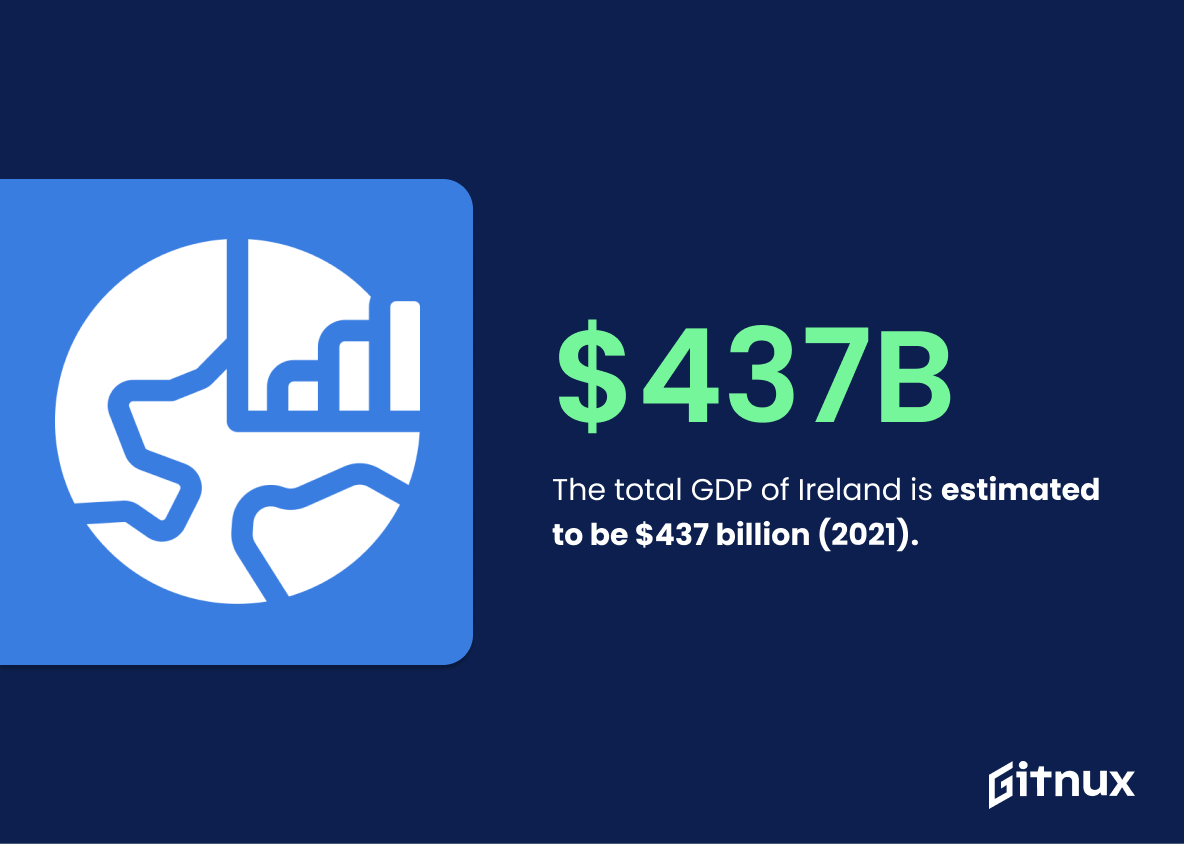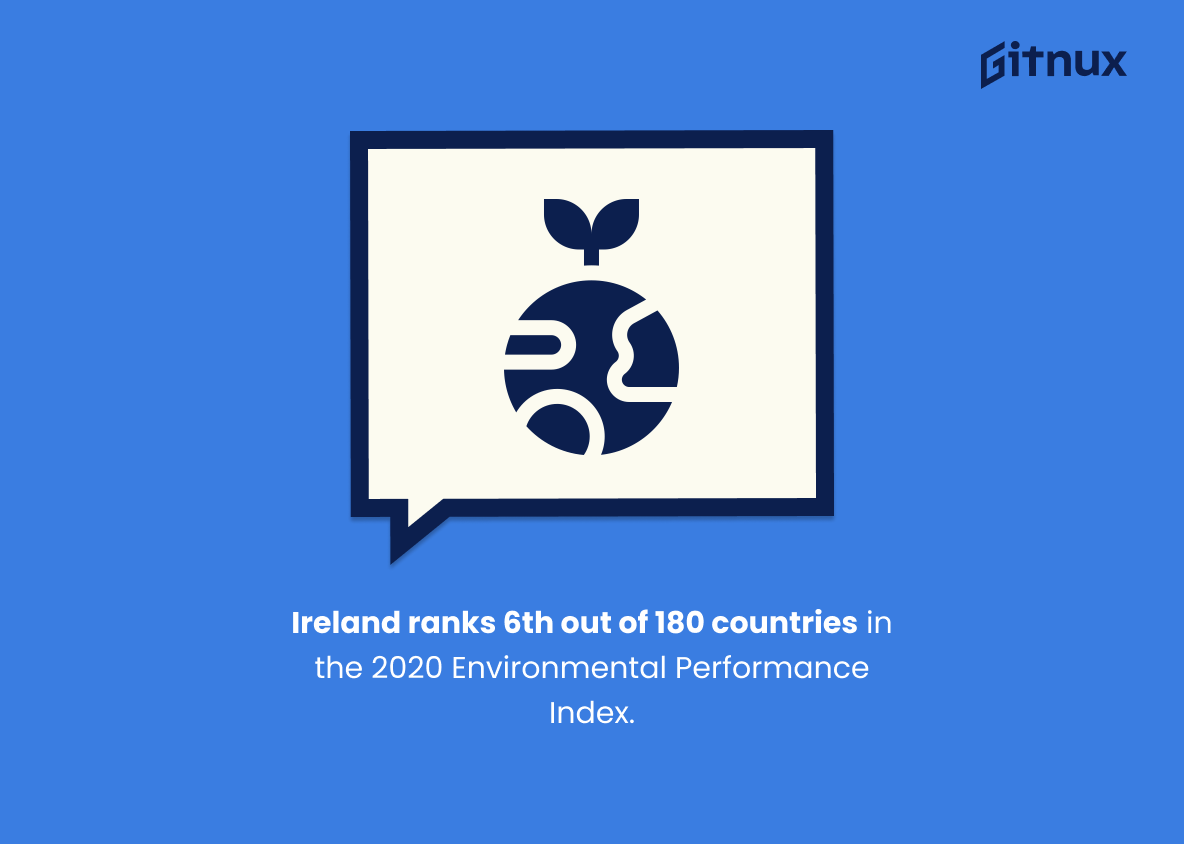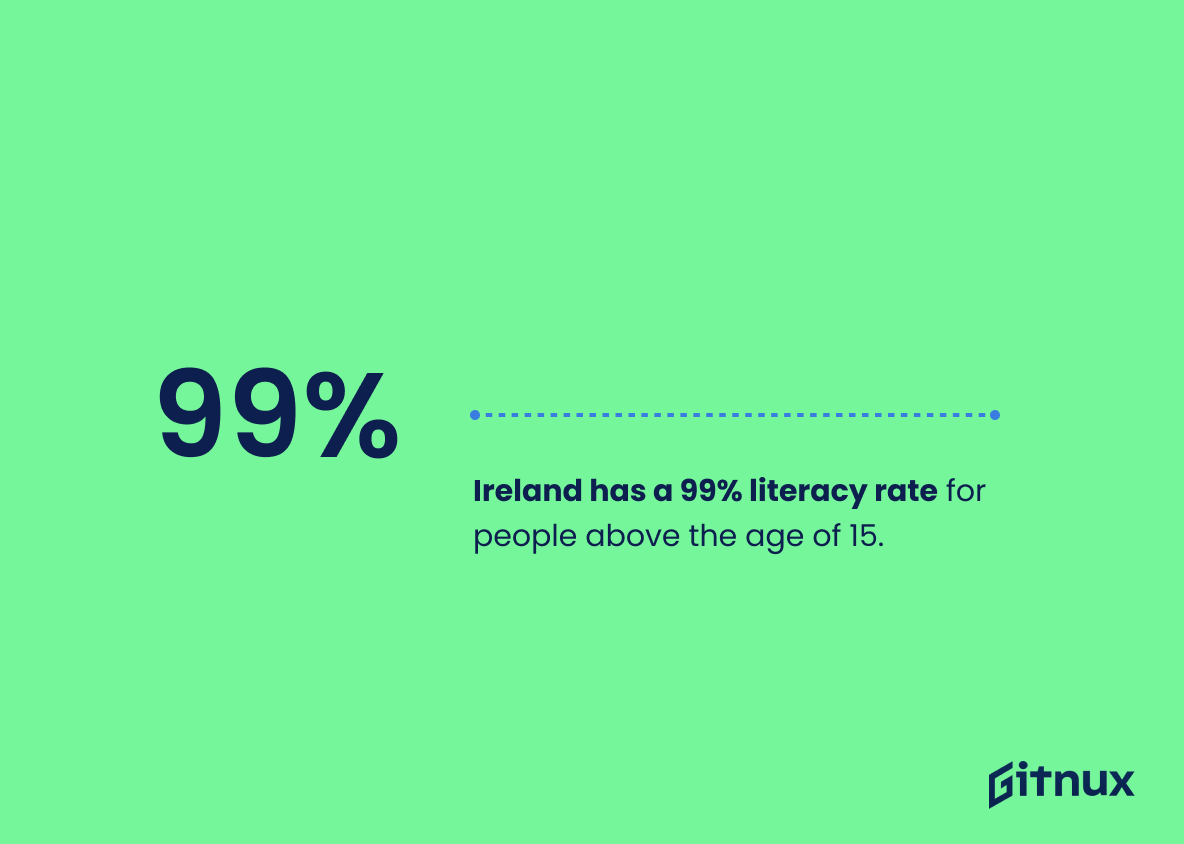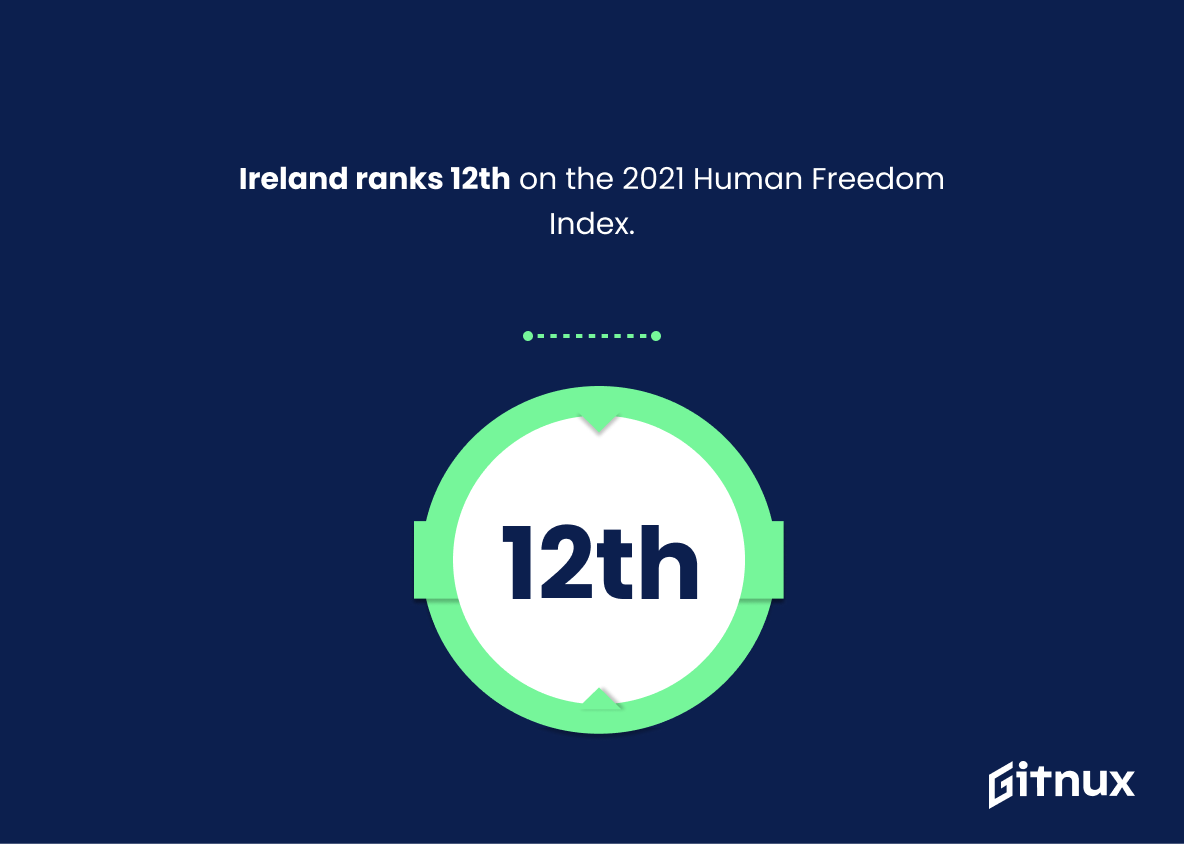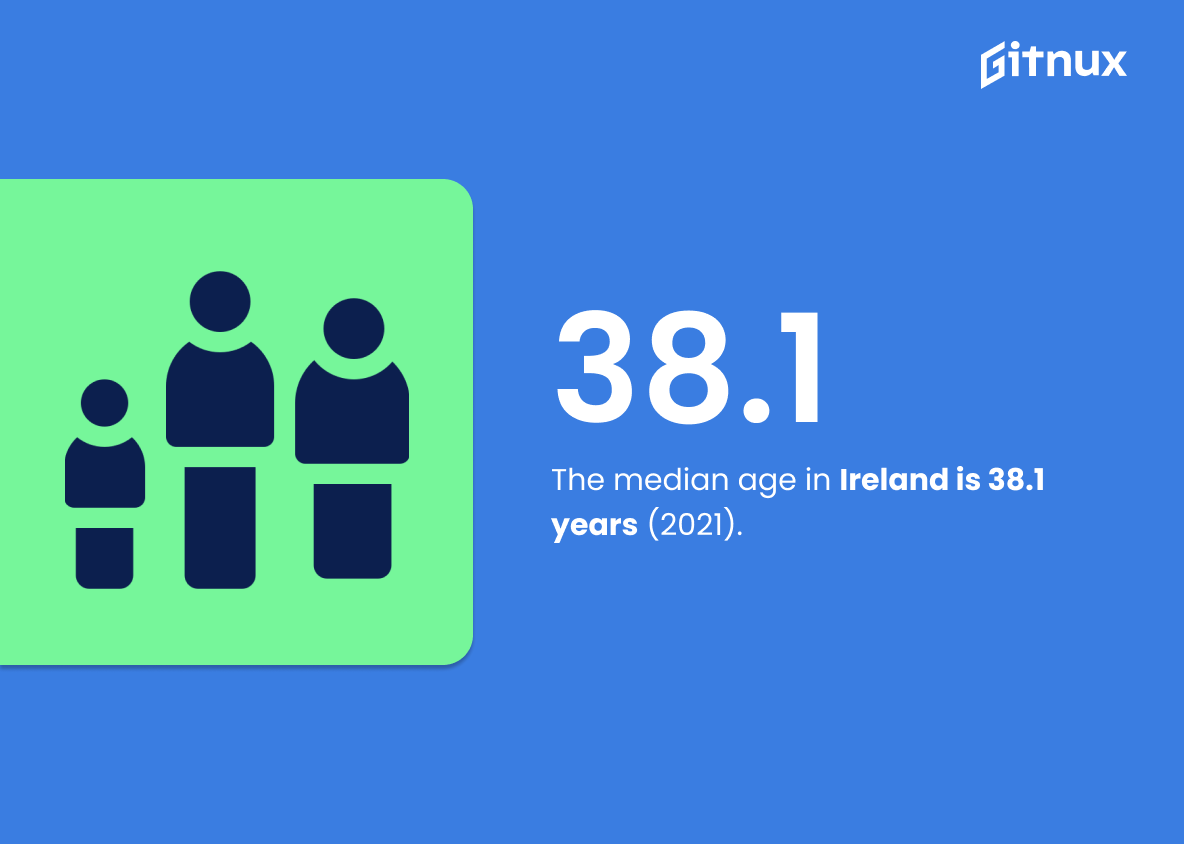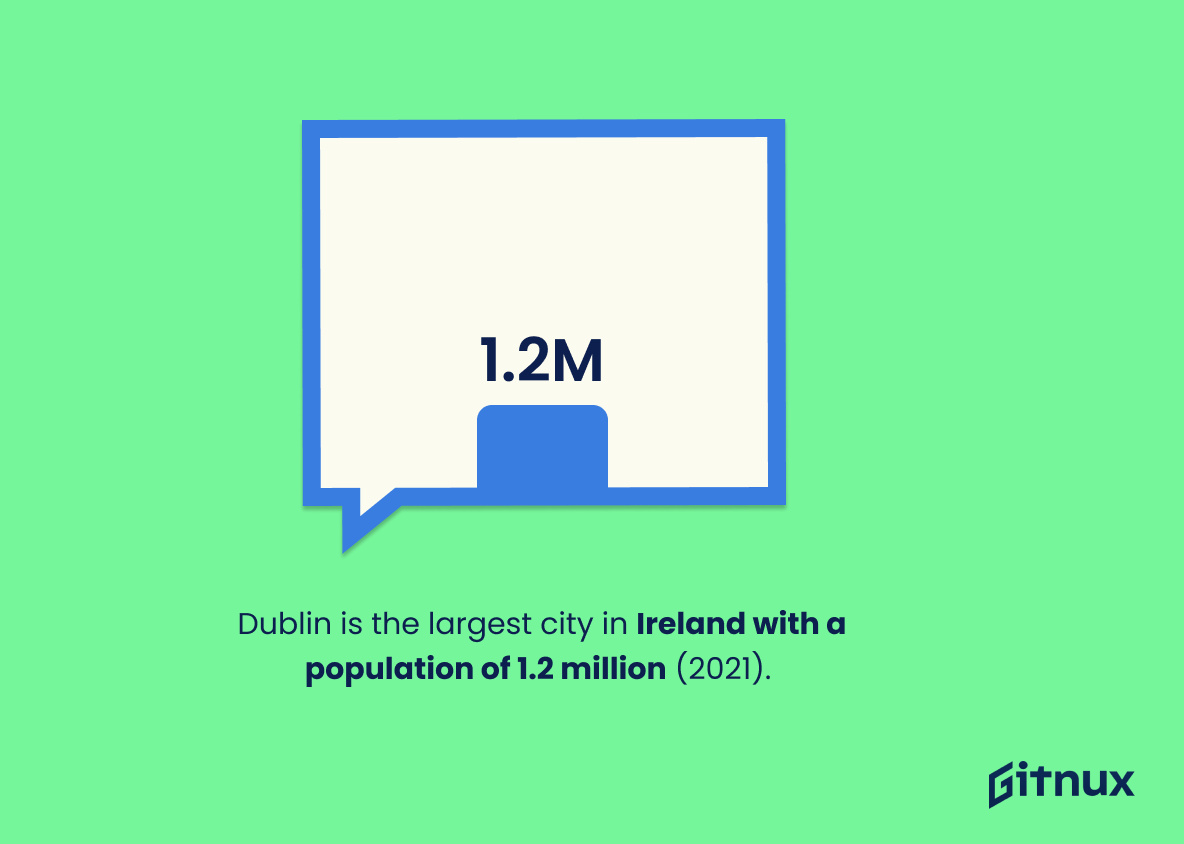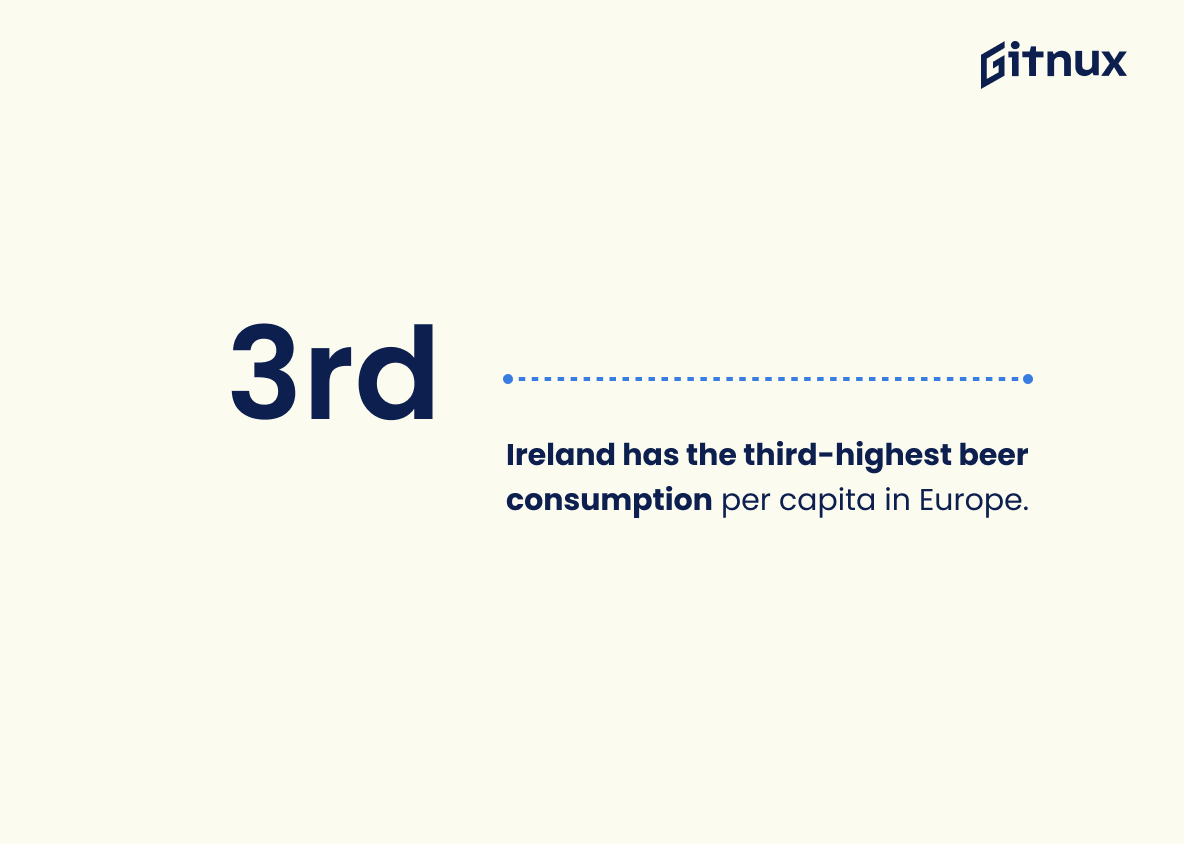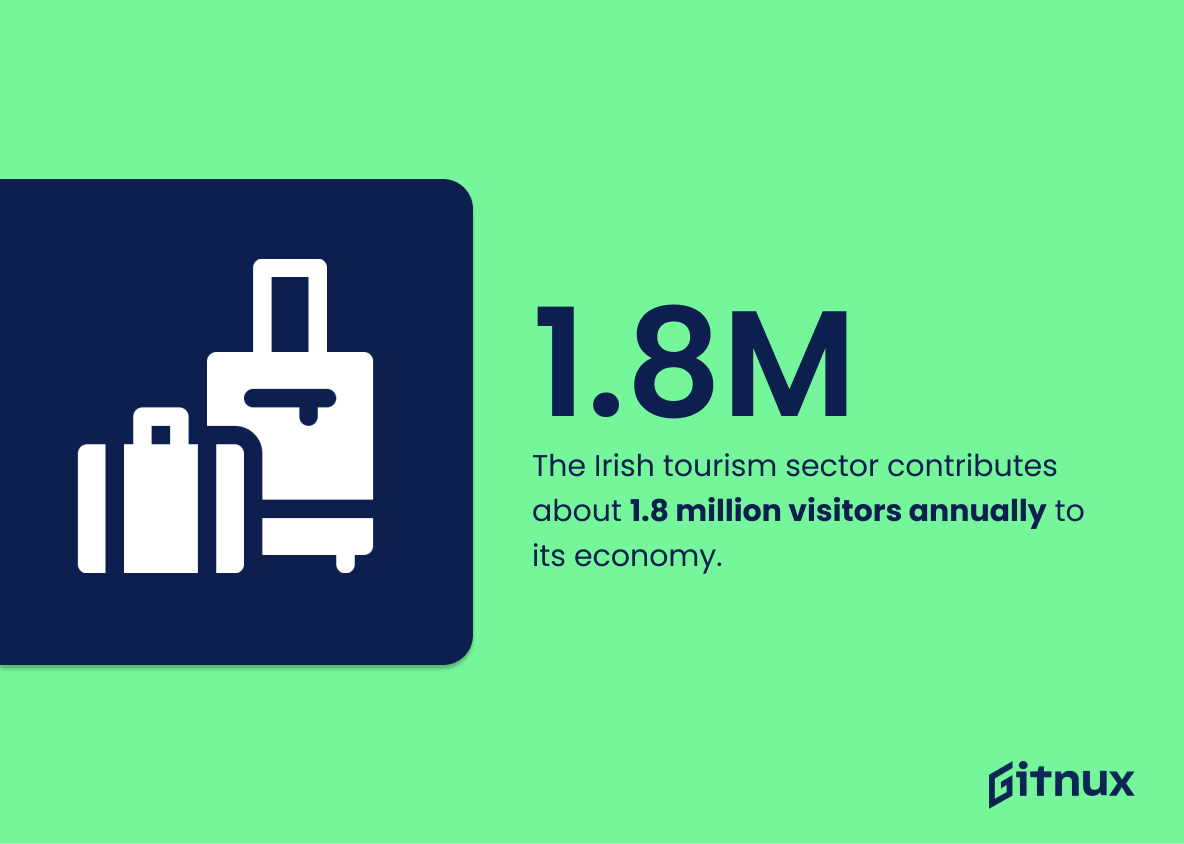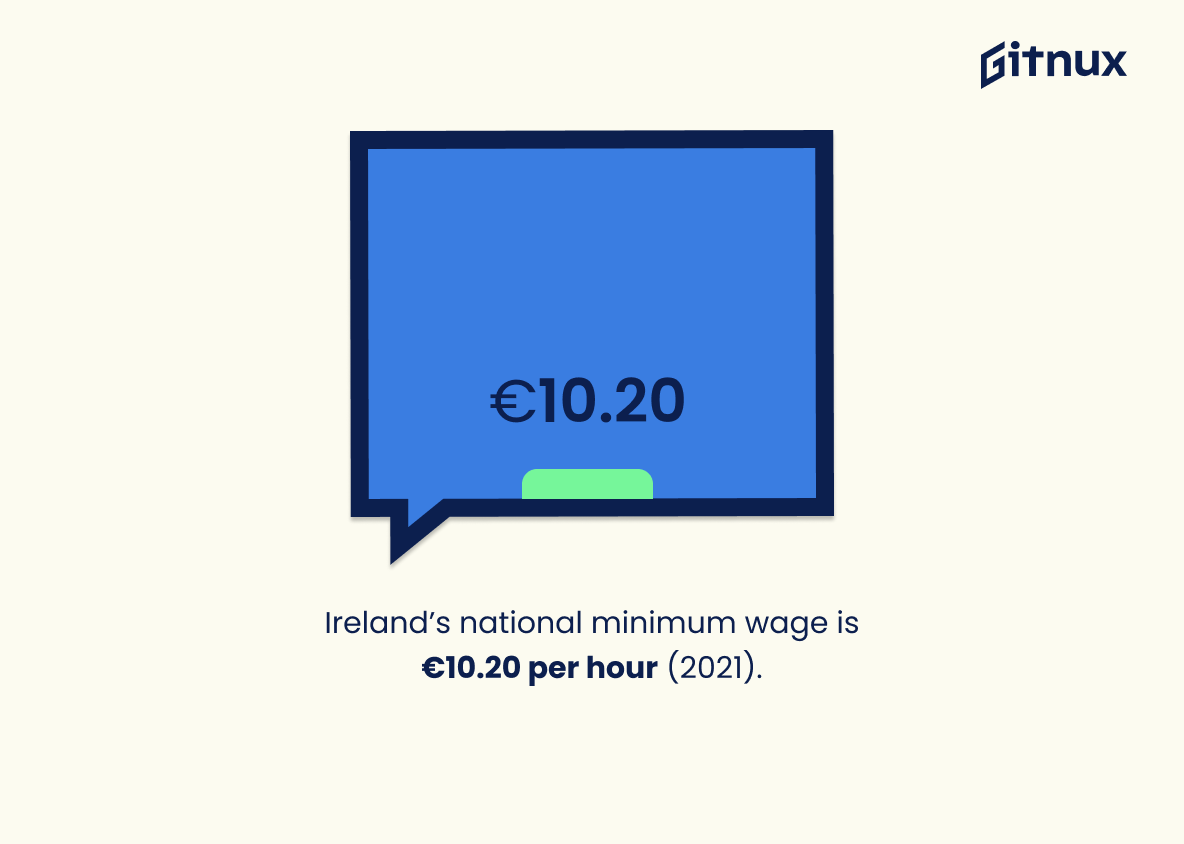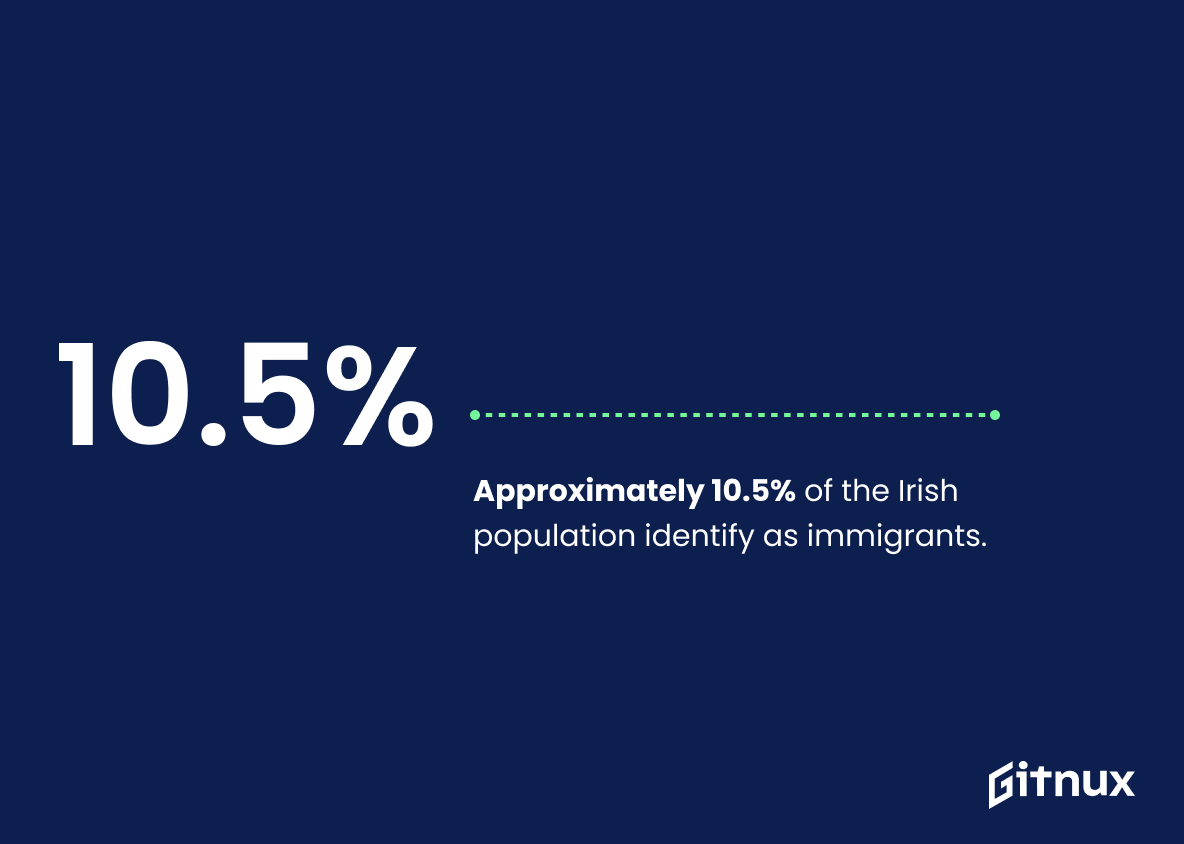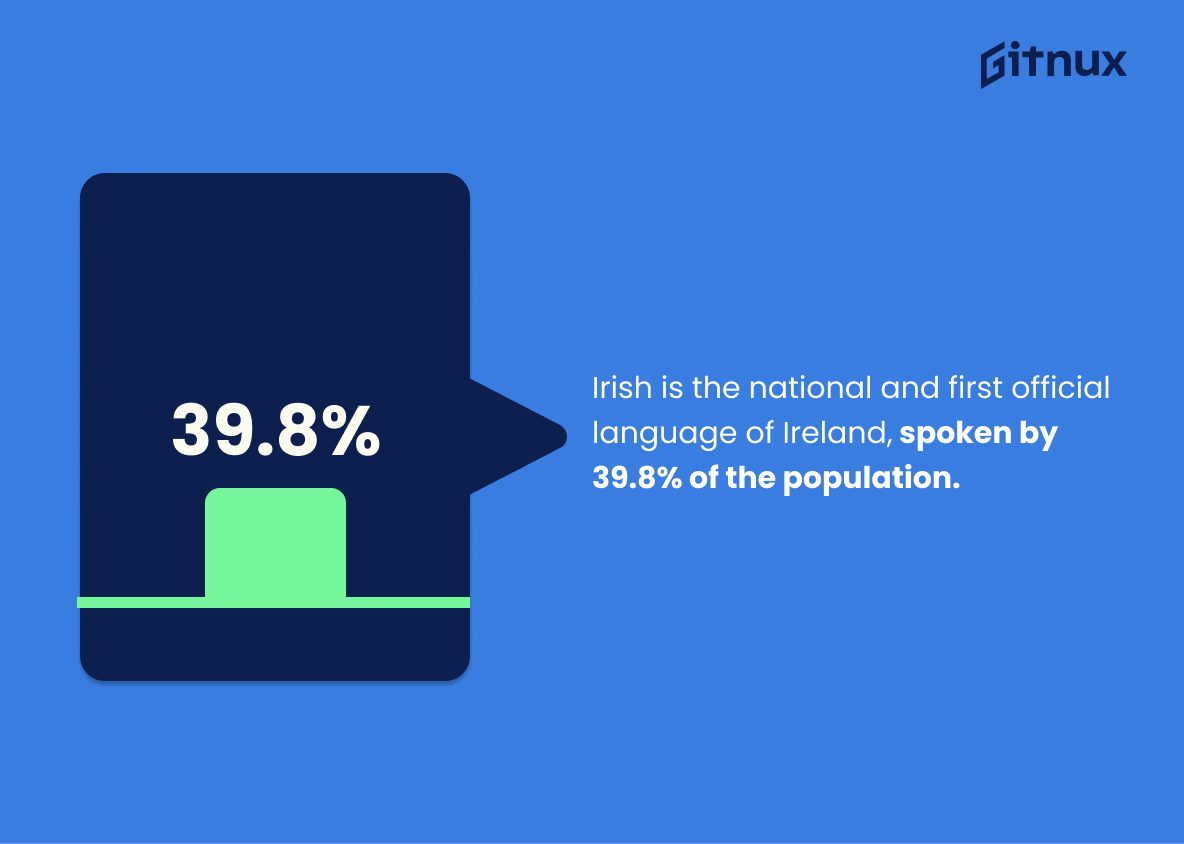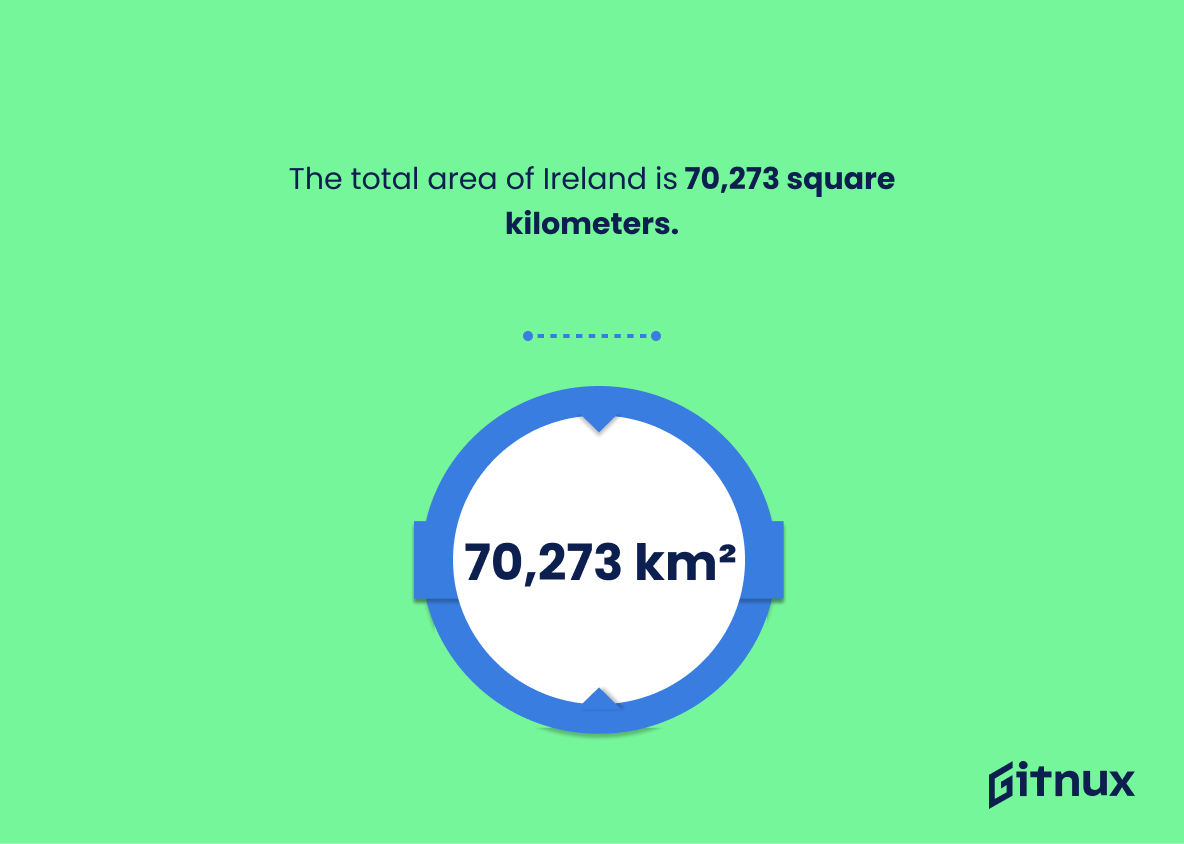Ireland is a small island nation located in the North Atlantic Ocean. It has an impressive array of statistics that demonstrate its success as a country, from ranking 15th on the 2021 World Happiness Report to having one of Europe’s highest beer consumption per capita rates. Ireland also boasts high literacy and life expectancy rates, along with strong economic performance and environmental protection measures. This blog post will explore 20 interesting facts about Ireland based on recent data sources such as the World Bank, Yale University’s Environmental Performance Index (EPI), Trading Economics, Statista and more.
The 2021 World Happiness Report ranking Ireland 15th is a testament to the country’s overall contentment and wellbeing. This statistic is a reflection of the quality of life that Ireland offers its citizens, and speaks to the nation’s commitment to providing a safe and prosperous environment for its people. It is a sign of the country’s progress and a reminder of the importance of investing in the happiness of its citizens.
Ireland’s population is approximately 5 million people (2021).
The fact that Ireland’s population is approximately 5 million people (2021) is an important piece of information when discussing Ireland. It provides a baseline for understanding the size of the country and the scope of its population. It also serves as a reference point for other statistics, such as the number of people living in poverty or the number of people employed in certain industries. Knowing the population size of Ireland is essential for understanding the country’s economic and social landscape.
Ireland Statistics Overview
The total GDP of Ireland is estimated to be $437 billion (2021).
This statistic is a testament to the economic success of Ireland. It shows that the country has achieved a level of prosperity that is enviable in the global economy. It also serves as a reminder of the importance of sound fiscal policies and economic planning in order to achieve such success. Furthermore, it highlights the potential of Ireland as a destination for foreign investment and business opportunities.
Ireland ranks 6th out of 180 countries in the 2020 Environmental Performance Index.
This statistic is a testament to Ireland’s commitment to environmental protection and sustainability. It highlights the country’s dedication to preserving its natural resources and protecting its citizens from the effects of climate change. This is an important achievement for Ireland, as it demonstrates the country’s commitment to protecting its environment and ensuring a healthy future for its citizens.
Ireland has a 99% literacy rate for people above the age of 15.
This statistic is a testament to the educational excellence of Ireland, highlighting the country’s commitment to providing quality education to its citizens. It is a reflection of the nation’s dedication to fostering a literate population, which is essential for the growth and development of any society. This statistic is also indicative of the high value placed on education in Ireland, which is essential for the country’s economic success. Furthermore, this statistic is a testament to the hard work and dedication of the Irish people, who have worked hard to ensure that their children have access to quality education.
Ireland has a life expectancy of 82 years.
The life expectancy of 82 years in Ireland is a testament to the country’s commitment to providing its citizens with a high quality of life. It speaks to the nation’s dedication to providing its citizens with access to quality healthcare, education, and other resources that contribute to a longer and healthier life. This statistic is a reflection of the progress Ireland has made in improving the lives of its citizens and is a source of pride for the nation.
Ireland ranks 12th on the 2021 Human Freedom Index.
The 2021 Human Freedom Index ranking of Ireland at 12th place is a testament to the country’s commitment to upholding the rights and liberties of its citizens. This is a reflection of the nation’s dedication to providing a safe and secure environment for its people, allowing them to live their lives with dignity and respect. This statistic is a powerful reminder of the importance of protecting human rights and freedoms, and serves as a reminder of the progress Ireland has made in this regard.
The median age in Ireland is 38.1 years (2021).
This statistic is a telling indication of the demographic makeup of Ireland. It provides insight into the average age of the population, which can be used to inform decisions about the country’s economic and social policies. For example, it can be used to determine the types of services and resources that should be allocated to different age groups. Additionally, it can be used to inform marketing strategies, as businesses can tailor their products and services to the needs of the population. In a blog post about Ireland, this statistic is an important piece of information that can be used to provide a better understanding of the country.
Dublin is the largest city in Ireland with a population of 1.2 million (2021).
This statistic is a key indicator of the size and scope of Ireland’s population. It highlights the fact that Dublin is the most populous city in the country, and serves as a reminder of the importance of the city in the Irish economy and culture. Furthermore, it provides a useful reference point for understanding the size and scope of the Irish population as a whole.
Ireland has the third-highest beer consumption per capita in Europe.
This statistic is a telling indication of the culture of Ireland, and how it is deeply intertwined with beer. It speaks to the importance of beer in the Irish lifestyle, and how it is a part of the social fabric of the country. It also speaks to the popularity of beer in Ireland, and how it is a major part of the country’s economy. This statistic is a powerful reminder of the importance of beer in Ireland, and how it is a major part of the culture.
Ireland ranks 3rd out of 190 economies for ease of doing business (2020).
This statistic is a testament to Ireland’s commitment to creating a business-friendly environment. It speaks to the country’s dedication to providing a supportive and encouraging atmosphere for entrepreneurs and business owners. This ranking is a reflection of the government’s efforts to make it easier for businesses to start and operate in Ireland, which is a major draw for potential investors and business owners.
Approximately 78.3% of Ireland’s population are Roman Catholics.
This statistic is a key indicator of the religious makeup of Ireland, providing insight into the country’s culture and traditions. It is also important to note that the majority of the population is Roman Catholic, which has a significant influence on the country’s laws and policies. This statistic is essential to understanding the religious landscape of Ireland and how it affects the nation as a whole.
The Irish tourism sector contributes about 1.8 million visitors annually to its economy.
This statistic is a testament to the importance of the Irish tourism sector to the economy of Ireland. It highlights the significant contribution that visitors make to the country’s economy, providing a much-needed boost to the local economy. This is especially important in the current economic climate, as the tourism sector is one of the few industries that has been able to remain relatively stable despite the global pandemic. Furthermore, this statistic serves as a reminder of the importance of the tourism industry to the Irish economy, and the need to continue to invest in and promote the sector in order to ensure its continued success.
Ireland’s national minimum wage is €10.20 per hour (2021).
This statistic is of great importance when it comes to understanding the economic landscape of Ireland. It provides insight into the cost of living in the country, as well as the wages that people are earning. It also serves as a benchmark for employers to ensure that they are paying their employees a fair wage. Furthermore, it can be used to compare the wages of different countries and to assess the overall economic health of Ireland.
Approximately 10.5% of the Irish population identify as immigrants.
This statistic is a powerful reminder of the diversity of the Irish population. It highlights the fact that Ireland is a nation of immigrants, with a significant portion of its population having come from other countries. This statistic is also important in terms of understanding the economic and social contributions that immigrants make to the Irish economy and society. It is a reminder that Ireland is a welcoming and inclusive nation, and that immigrants are an integral part of the Irish community.
Irish is the national and first official language of Ireland, spoken by 39.8% of the population.
This statistic is a powerful reminder of the importance of Irish in Ireland. It highlights the fact that Irish is not only the national language, but is also spoken by a significant portion of the population. This speaks to the cultural and historical significance of the language, and its continued relevance in modern Ireland.
The total area of Ireland is 70,273 square kilometers.
This statistic is an important indicator of the size of Ireland, providing a tangible measure of the country’s physical expanse. It is a useful reference point for anyone looking to gain an understanding of the scale of the country, and can be used to compare Ireland to other nations. In a blog post about Ireland, this statistic can be used to provide a sense of the country’s size and scope, helping to give readers a better appreciation of the country.
Conclusion
Ireland is a vibrant and diverse country with many impressive statistics. It ranks 15th in the 2021 World Happiness Report, has an estimated population of 5 million people, an unemployment rate of 5.8%, and a total GDP of $437 billion (2021). Ireland also boasts high rankings on environmental performance index (6th out of 180 countries), human freedom index (12th out of 180 countries) and ease-of-doing business ranking (3rd out 190 economies).
The literacy rate for those over 15 years old is 99% while life expectancy stands at 82 years. Dublin is the largest city in Ireland with 1.2 million inhabitants, followed by Cork which has approximately 210 thousand residents as per 2021 estimates. Beer consumption per capita in Ireland ranks third highest among European nations while 78.3% identify as Roman Catholics according to 2019 figures from Central Statistics Office Ireland . Additionally, 29.4% hold bachelor’s degrees or higher qualifications; 10.5 % are immigrants; Irish language speakers account for 39 8%; national minimum wage stands at €10 20/hour; tourism sector contributes about 1 8 million visitors annually to its economy ;and finally the total area covered by this beautiful island nation measures 70 273 square kilometers .
References
0. – https://www.www.cato.org
1. – https://www.www.citypopulation.de
2. – https://www.epi.yale.edu
3. – https://www.www.worldometers.info
4. – https://www.worldhappiness.report
5. – https://www.www.cso.ie
6. – https://www.www.macrotrends.net
7. – https://www.www.doingbusiness.org
8. – https://www.www.cia.gov
9. – https://www.www.statista.com
10. – https://www.data.worldbank.org
11. – https://www.www.workplacerelations.ie
12. – https://www.www.ireland.com
13. – https://www.www.worldbank.org
